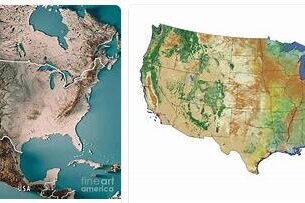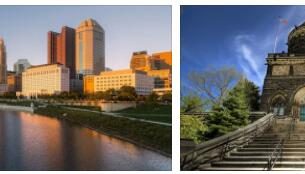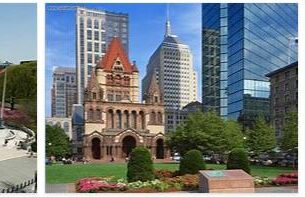Montreal is the largest city in the province of Quebec. It is located on the island of the same name at the confluence of the Ottawa River into the St. Lawrence River, and, together with the cities and small islands adjacent to it, makes up the Montreal agglomeration. Just 170 km west of the city is the capital of Canada – Ottawa. Just like in Quebec, the majority of Montreal ‘s residents are French Canadians, in addition, Montreal is the second largest French-speaking city in the world after Paris. In the center of Montreal Mount Mont-Royal rises 233 m high, which gave the name to the city. Numerous streets lined with skyscrapers and ancient buildings depart from it. The first European to set foot on the island of Montreal was Jacques Cartier, it happened in the middle of the 16th century. The first European settlement on the site of the modern city arose in 1642, at the same time the mountain in the center of the island was named Mont-Royal.
According to philosophynearby, the old city of Montreal, where the main attractions are located, is located on Mount Royal and at its foot. The top of the mountain is crowned with a 31.4 m high cross. The first cross was erected by order of the founder of Montreal – Paul Chaumedy de Maisonneuve – in 1643. The current cross was erected in 1924 as a symbol of the Catholic faith. On the northern slope of Mont-Royal stands the Cathedral of St. Joseph. In 1904, a small chapel was built on this site, which, after several rebuildings in 1967, turned into a majestic cathedral. St. Joseph’s Cathedral is the largest church in Canada, and its dome is the third largest in the world. In front of the cathedral is a statue of St. Joseph. On the slopes of Mont-Royal, there is an extensive park of the same name with many walking trails, bike paths, a lake and slopes for skiing in winter. This is the most popular place to stay in Montreal.. The park was designed by American architect Frederick Olmsted, who also designed Central Park in New York.
To the east of Mont-Royal is St. Patrick’s Cathedral from 1847. Not far from here, the McCord Museum of the History of Canada is interesting. The museum was established in 1921 on the basis of the private collection of David Ross McCord. More than 1 million items on the history of the country are presented here. One of the oldest public places in Montreal, Place des Arms, is located in the vicinity of the museum. It was built in 1693. On the square there is a monument to the founder of the city – Paul Chaumedy de Maisonneuve. In front of Place des Arms stands the Church of Notre-Dame-de-Montreal. The church was erected in 1829 in neo-gothic style, it was the first building in the country built in this style. Notre Dame de Montreal is famous for its interior decoration. The vaults of the cathedral are painted blue and painted with golden stars, and the church altar is richly decorated with wood carvings and sculptures of saints. An interesting fact is that the stained-glass windows of the church do not convey biblical motifs, but scenes from the history of Montreal are laid out. The church also contains one of the largest organs in North America.
The nearby Church of Notre Dame de Bonsecour is interesting. The current building was erected in 1771 on the site of the burnt church of 1657. This is one of the most ancient churches on the continent. The church stands next to the Old Port, for which it is called the “church of sailors.” Adjacent to the church is the Bonsecours shopping complex, housed in an 1847 building. The Old Port area is very popular among tourists: it offers breathtaking views of the city. Place Jacques Cartier is located in front of the entrance to the Old Port, opposite the square is the building of the City Hall of 1878, and in front of the City Hall is the building of the Museum Pointe-à-Callières (Museum of Archeology and History). The Pointe-à-Callière Museum was opened in 1992 on the spot where the first European settlers landed. It tells about the history of Montreal and stores a variety of archaeological finds. The Montreal Historical Museum is also located near City Hall., which is located in the ancient castle of Ramaze. The castle was built in 1705 as the residence of one of the governors of Montreal – Claude de Ramazet. Today, expositions on the history of the province from the time of European colonization to the present day are exhibited here.
It is worth noting that Montreal is one of the most important cultural centers of the country. In terms of the number of museums, Montreal ranks first among Canadian cities. Be sure to visit the Museum of Modern Art on Arts Square, which contains about 7,000 works by contemporary masters, the Museum of Fine Arts, which exhibits 30,000 objects: paintings, sculptures, graphic works, photographs and decorative art, Canadian Center for Architecture, which is located in an old mansion with restored interiors of the late 19th century, the Stewart Museum, which tells about the history of the discovery of the New World, and the Exhibition Center of the University of Montreal .
In addition, it is worth visiting St. James Street in Montreal, where most of the banks are located, which are located in buildings of the 19th century, as well as at the 188-meter skyscraper Vill-Marie, under which an underground city of 12 square meters stretches. km with many shopping centers. There are about 350 parks in Montreal, the most famous of which is Mount Royal Park. In the northeastern part of the island
Montreal is located Olympic Park, which is the Olympic Stadium. The Montreal Olympic Stadium hosted the 1976 Summer Olympics. The stadium building is truly grandiose. It has a 175m high leaning tower which is the tallest leaning structure in the world. There are observation decks on the tower, from where a beautiful view of the city opens. The Olympic Park is located Biodome, where various natural zones of the planet are represented: tropics, northern coniferous forests, coastal zones and Arctic zones. There is also a Montreal insectarium with numerous species of insects. Nearby is the third largest Botanical Garden in the world.. There are collected 22,000 plant species, 10 greenhouses and about 30 themed gardens. Of greatest interest are the Chinese Garden, the Japanese Garden, the European Gardens, and the recreated natural areas of the Sonoron Desert and the St. Lawrence River. A little to the south, under the 4.5 km long Jacques Cartier bridge thrown across the St. Lawrence River, is the island of St. Helen. The island is home to the amusement park La Ronde. The park was built in 1967 and is now the largest amusement park in the province. There are more than 100 attractions, many restaurants, a casino, a swimming pool and Florali gardens. Near the island of St. Helen is the island of Notre Dame with an auto racing track, where the Canadian Grand Prix “Formula 1” takes place.
Off the northwestern coast of the island of Montreal, the island of Bizarre is of interest, on which the Bois de Ile Bizarre park extends . It has an area of 200 hectares and is made in the form of a star. The park has wooden decks that hang over the ground so that its visitors do not disturb the natural environment. Also in the park there is a lake of Two Mountains, where you can see many waterfowl. In summer you can go swimming, canoeing, fishing, hiking, cycling or having a picnic. In winter, you can cross-country ski or just walk in the park. Near Bizarre Island is the vast Laval Island. The Cosmodome is interesting here, which tells about the solar system and the history of the conquest of space. The cosmodome consists of 6 halls, here you can see models of rockets, simulators where visitors are invited to try their hand, the Moon Rock and the original astronaut costume from the Apollo mission.
About 100 km north of Montreal in the Laurentides, on the slopes of Mount Tremblant (935 m), there are many ski resorts that turn into holiday homes with extensive golf courses and bike trails in the summer.
Since 1737, Montreal has been connected to the provincial capital, Quebec, by the Royal Road. This is the first road in Canada, laid specifically for trips on horse-drawn carriages. It runs along the left bank of the St. Lawrence River through scenic areas: Laurentides, lakes, forests, rocky banks, and ancient villages. In the center of the route is Lake St. Pierre, on the banks of which there is a biosphere reserve. It is the largest nesting area for waterfowl in North America. Every year, during the periods of spring and autumn migrations, about 300 species of birds settle here, among which is a rare snow goose. 50 km to the north is the La Maurice National Park with an area of 536 square meters. km. The park is located on the hilly Laurentian Upland among picturesque lakes. Most of it is covered with forests, 40 species of mammals and 180 species of birds live here.



